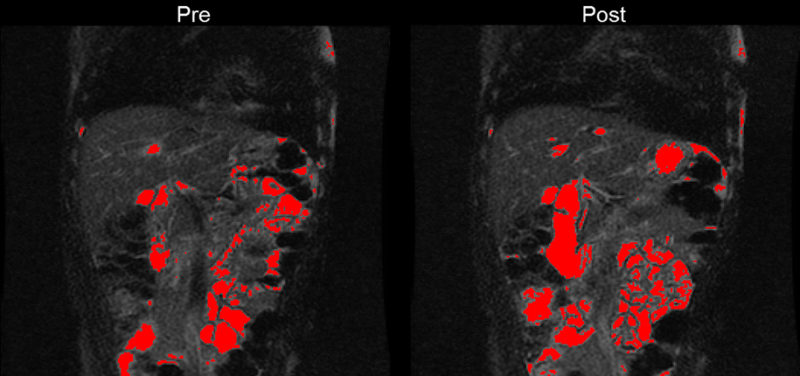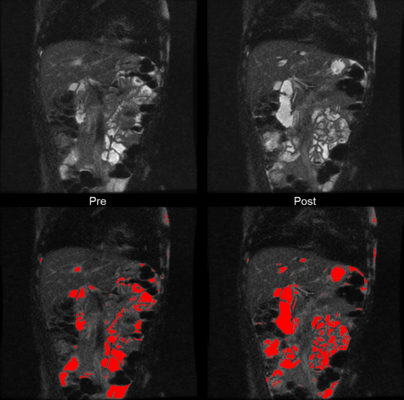
The pancreas has two major jobs: one is to produce insulin, which helps control blood sugar, while the other is to produce fluid that helps digest food. Diseases that affect the pancreas can disrupt one or both of these functions. Problems with the digestive function of the pancreas are being recognized more and more in children and can lead to poor growth and development. Currently, the best way to measure digestive function of the pancreas is to put the child to sleep, place a camera into the intestines and collect digestive juice produced by the pancreas. We believe we can do the same thing with an MRI instead! Before we can use MRI on patients who we think have diseases of the pancreas, we need to know what normal function of the pancreas looks like with MRI.
 Image: MRI image showing pre- and post-secretin images with (red) and without image segmentation to quantify fluid.
Image: MRI image showing pre- and post-secretin images with (red) and without image segmentation to quantify fluid.
Currently, Dr. Andrew Trout, Assistant Professor of Radiology and Pediatrics and Director of Clinical Research for Radiology, is heading the research study MRCP: A Reliable, Non Invasive Method for Staging Chronic Pancreatitis in Pediatrics, that plans to define what normal pancreas function looks like by MRI.
Fifty “normal” (or healthy) children, ages 8-18, are being recruited to participate in his study. Dr. Trout hopes to be able to create a less invasive and more technologically forward way to diagnose certain pancreas diseases with this study and follow-up research.
Contributions by Dr. Andrew Trout and edited by Sparkle Torruella, (COORD-REG AFF ).
